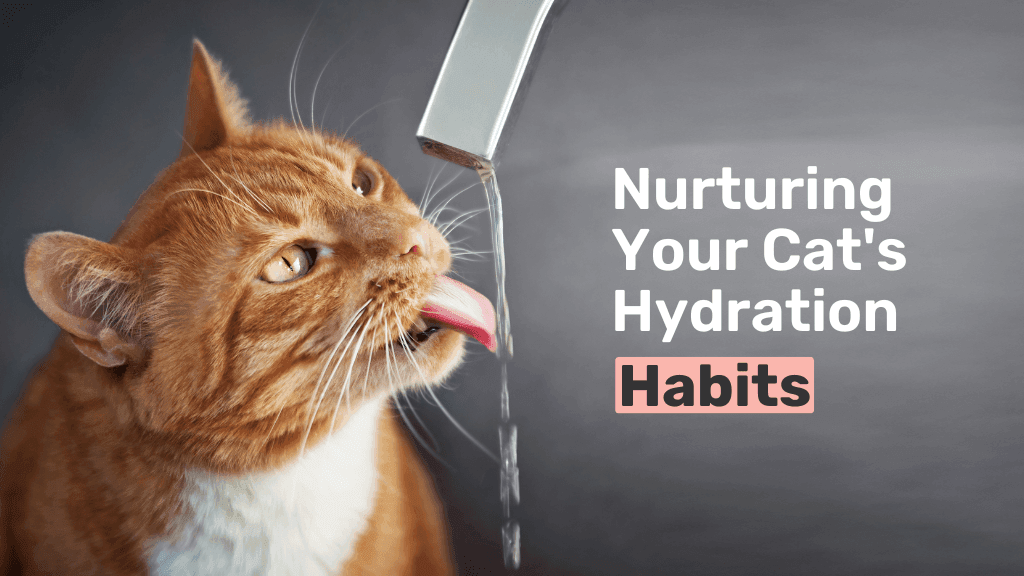Nurturing Your Cat's Hydration Habits
)
Cat owners are well aware of their pet's discerning nature, particularly concerning their food and water preferences. Cats tend to adhere to their routines, making it crucial to pay attention to their water consumption habits. Even small details such as the location of their water bowl or its proximity to their food can impact their hydration levels and overall wellbeing.
While cats may not display a strong thirst drive, ensuring they stay properly hydrated is vital for their health. As desert-adapted creatures, they have evolved to require less water compared to other animals, but maintaining their hydration is still essential for optimal organ function, digestion, circulation, and urinary health.
Here's a surprising fact: Cats are not efficient drinkers, consuming only about 3% of a teaspoon of water per lap. Therefore, it's essential to provide them with accessible and appealing water sources to encourage regular hydration.
What are the signs of dehydration in cats?
Dry gums
Lethargy
Loss of appetite
Decrease in skin elasticity
Elevated heart rate
To test for dehydration, a quick and easy technique called “skin tenting” can be used. To do this, gently pinch the skin over your cat’s shoulders. If the skin remains gathered when released, or does not return to normal immediately, then this is a sign that your cat could be dehydrated.
Dehydration is serious. If you notice or believe your cat is dehydrated, be sure to call us for advice.
How much water should a cat drink per day?
How much water a cat should drink per day varies based on its diet. Wet food typically comprises around 70% water, and so much of the water intake will be in the food itself. Certain conditions like diabetes, chronic kidney disease, and hyperthyroidism can lead to increased water consumption. Establishing your cat's normal water intake serves as a reference point; monitor this by measuring water in bowls over 24 hours. If your cat drinks more than 50mls/kg of water within 24 hours, it might suggest excessive drinking and signal potential health issues that require attention. Keep an eye on any upward trends in water intake.
What are some tactics to get your cat to drink more water?
As cats age, their kidneys require more water, prompting the need for encouragement from pet owners. Cats are highly sensitive to taste and presentation, making water accessibility a crucial consideration. Here are the top five tips to promote hydration in your cat:
Choose the right water bowl: Opt for a wide, shallow bowl to prevent discomfort from whisker contact. Some cats even prefer drinking from a filled glass.
Optimal placement: Ensure the water bowl is in a visible and easily accessible location, providing a sense of security for your cat.
Keep food and water apart: Separate water from food to prevent contamination and cater to finicky felines. Having multiple water sources is recommended.
Fresh water is key: Replace water daily to prevent the accumulation of dust, dirt, and hair, maintaining its appeal for your cat.
Consider a water fountain: Running water can be more enticing to some cats, mimicking the freshness of water found in the wild. This alternative might be preferred over still water.
Sometimes, even if you try all the above tips and your cat still won’t drink. The fact is, that cats are actually desert species, so have developed kidneys that can concentrate urine very effectively. It is fairly normal not to see a cat drink very much at all, particularly if they are on some wet food as well as dry, because wet food is 70% water.
In older cats with chronic kidney disease, supplementing wet food with water can help avoid dehydration when their kidneys no longer function as well.
Remember - a hydrated cat is a healthy cat. Make sure your cat always has clean, fresh water in a quiet accessible location.
| Tags:CatClient InformationHealth Advice |
&geometry(126x115))